Hi everyone!
I brew coffee from beans everyday, but I realized that I’ve never really taken a close look at the coffee bean. I usually just throw them into my grinder and start grinding. It just occurred to be that I might not have been giving the coffee bean enough attention.
So today I would like to share some observations about the bean. If you look closely at your beans, it will give you a good indication of their quality.
Coffee Beans are not actually ‘Beans’
I suspect that a lot of people are aware of this, but coffee beans are not beans but actually are pits of the coffee cherry. These coffee cherries grow on coffee trees and at the center of each cherry you find two pits. These pits, once processed to remove from the cherry and dried and roasted, are what we call coffee beans.
An interesting thing is that this apparent mis-naming of the bean is not only in English. In Japanese as well, we refer to the coffee beans as ‘beans’ (まめ mame), and not ‘pits’ (たね tane). I am not fluent in any other language, so I do not know if this is common to all or most of the languages, but I found it kind of interesting.
Closer look at the beans
I took a good look at two bags of beans that I had on hand.
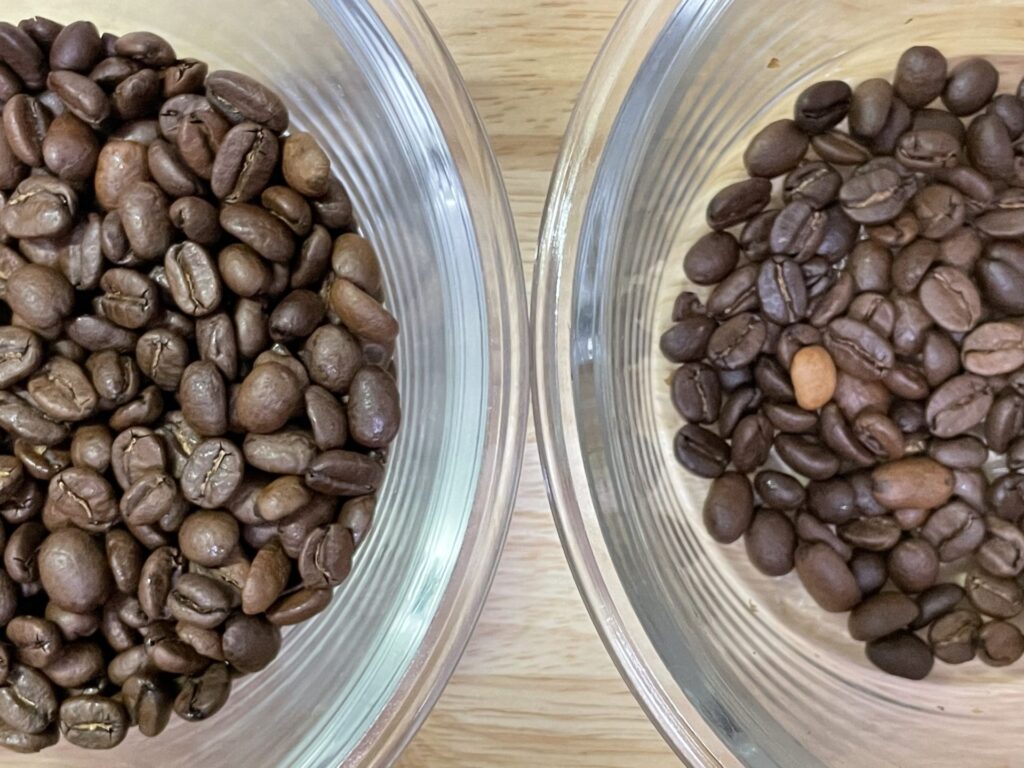
The left is a blend coffee from MARUYAMA COFFEE and the right is a blend from MUJI. (It doesn’t seem like MUJI sells coffee beans in the US)
The beans from MARUYAMA COFFEE are about $6/100g and the MUJI ones are about $2.5/100g. You can find beans which are well over $10/100g so both are not extreme quality beans, but the MARUYAMA COFFEE beans are speciality grade coffee.
So why do these beans cost so different?
The biggest differentiator is of course the quality of the beans. Both are blends so they are not single origin but MARUYAMA COFFEE provides speciality coffee, so it seems likely that their blend will also be beans from similar quality. The MUJI beans probably are not bad beans, but they probably are from a lower grade.
But I would like to dig deeper into the look of these beans to see if there are any differences.
Uniformity of the roast
A difference that you can immediately observe is the uniformity of the roast. The color of the beans from MARUYAMA COFFEE are much more uniform compared to MUJI’s. MUJI’s beans clearly have some very under roasted beans and some which are much darker.
Some blend coffees are roasted before mixing, so that the beans from different origins can be roasted to a level that best matches the specific bean, then mixed together. This means that un-uniform roast levels does not directly mean low quality. But in this case, a proportion of the beans should be of uniform roasts. For example the blend may contain 20% of a specific bean type, for that 20% the roast should be uniform.
In the case of the beans from MUJI, there are only 1 or 2 very lightly roasted beans, which suggests that this is not post-roast blended, but simply a result of an un-uniform roast.
Getting a uniform roast requires skill and effort. On top of this roasters will typically have to roast in smaller batches to maintain uniformity. This adds some extra costs in high quality uniformly roasted beans.
Defect beans
The other, sightly more subtle, difference is the amount of defect beans contained.
Defect beans refers to beans which grew in an odd shape or ones which have been eaten by insects.
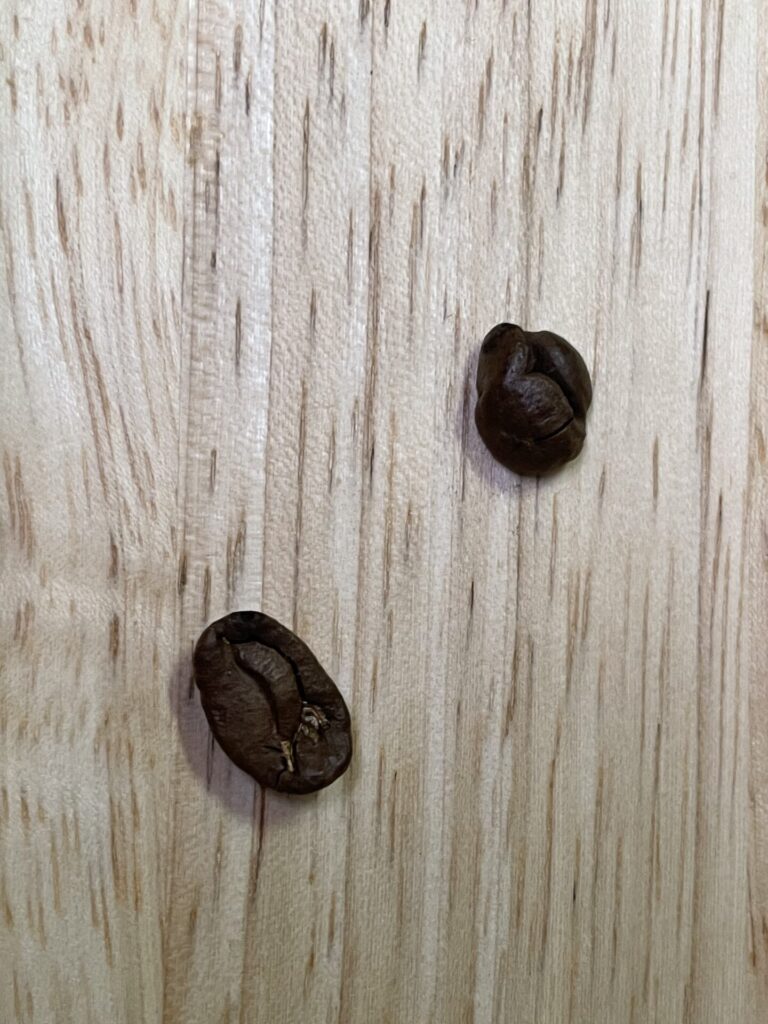
It is said that these defect beans cause unwanted flavors to enter your cup, and the fewer defect beans you have the better. (I personally don’t know how different these defect beans taste. Maybe I will try gathering only the defect beans and comparing it to the taste of normal beans. Although this would be quite a lot of work…)
Coffee bean shops which put the extra effort remove these defect beans before they ship them out to customers. It seems that the typical way to do this is to hand-pick them. So obviously this is a costly process only applied to high quality beans which this sort of attention to detail will matter. Mass produced coffee beans really cannot be processed in the same way.
I found a couple defect beans from MUJI’s bag, but I was unable to find any from MARUYAMA COFFEE’s bag. This is a good sign of the level of attention each roaster/producer gives to the coffee.
Also this might not exactly be categorized as defects but cracked or damaged beans can be seen in low quality coffee beans. A lot of this was seen in MUJI’s beans.
You may think what’s the big deal? You’re going to grind them anyway, right? But these damaged beans will degrade faster because of the increased surface area. This is exactly the reason you want to grind your beans fresh.
For mass producers like MUJI, I imagine that the beans get damaged while they are shipped to the various stores.
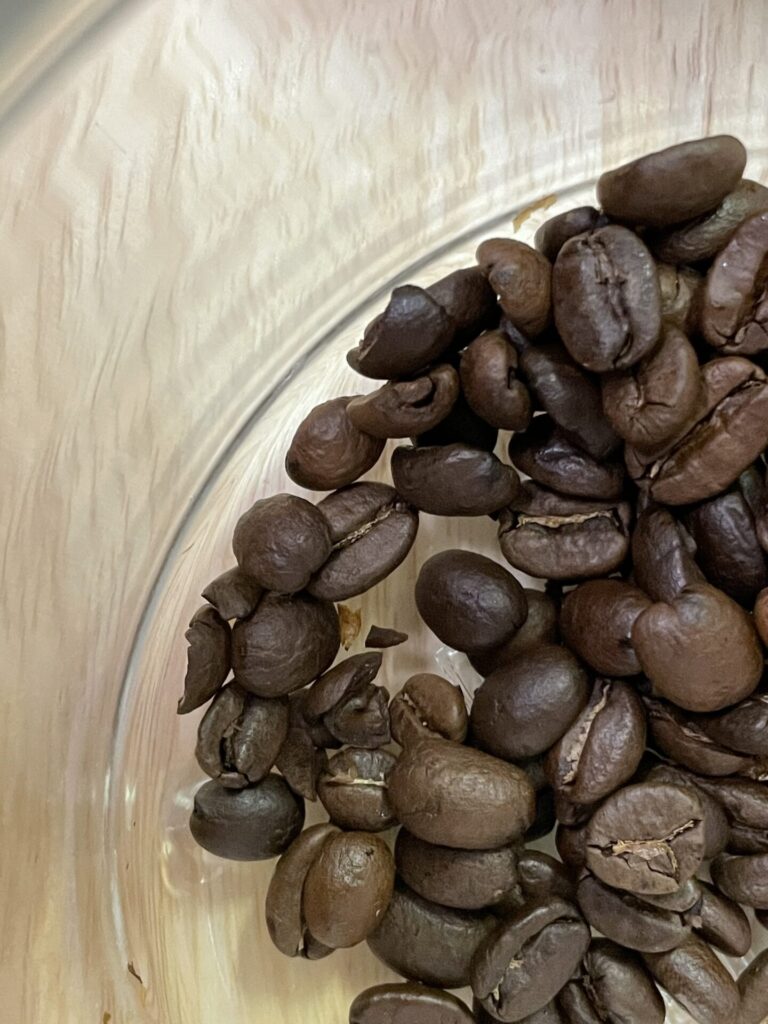
I did not see any cracked or damaged beans in MARUYAMA COFFEE’s bag. I directly bought the beans from their online shop. They might be removing cracked beans while picking out the defects, but also direct EC may be a benefit here as well.
I tried eating the beans as is
I don’t think may people eat their coffee beans as is, but it’s edible. There are chocolate coated coffee beans as snacks.
So I went a head and ate one, obviously no chocolate.
At first there wasn’t much taste. Biting in to the bean, the texture was like biting in to a dry soy bean. Biting the bean and crushing it released a faint sweetness.
After that I stated getting the bitterness of coffee. To be honest, its tastes good up to this point.
But soon after that a harsh taste starts to over power, and it becomes really not too good.
I swallowed it at this point, but as expected it was kind of powdery and left a very unpleasant feeling in my throat. It was at this point I realized why people coat it with chocolate.
Coffee beans are edible, yes, but I recommend that you just grind your beans and brew coffee with them.


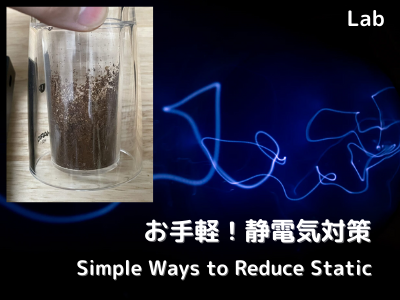
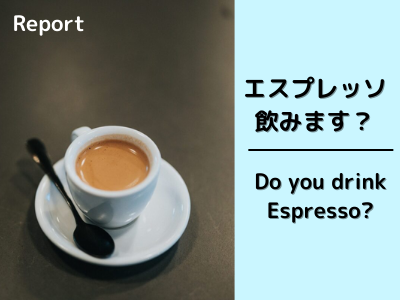
コメント